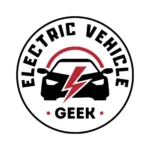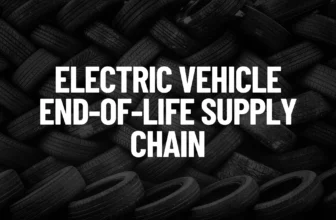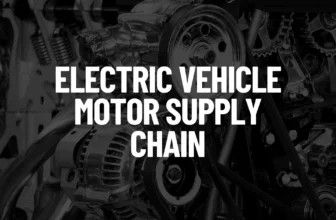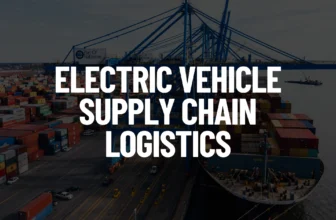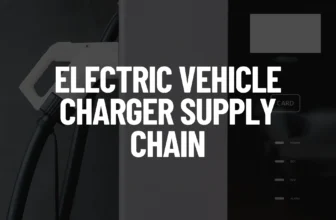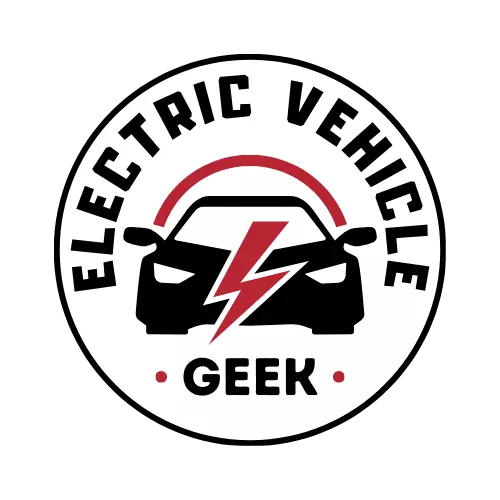The electric vehicle assembly supply chain is a crucial part of the overall EV supply chain, focusing on the integration of various components into a complete vehicle. This process involves bringing together parts manufactured in other electric vehicle sub-supply chains, such as batteries, motors, software, and thermal management systems.
With the global shift towards electric mobility, understanding the intricacies of the EV assembly process and its transformation from traditional internal combustion engine (ICE) vehicle production is crucial.
Table of Contents
- Core Elements of the EV Assembly Supply Chain
- Automation and Manual Labor in the Electric Vehicle Assembly Supply Chain
- Outsourcing in Electric Vehicle Assembly Supply Chain
- The Rise of Gliders in Electric Vehicle Assembly Supply Chain
- EV vs. ICE Vehicle Assembly: A Comparative Perspective
- Key Components in EV Assembly
- Logistics in the EV Assembly Supply Chain
- Conclusion
Core Elements of the EV Assembly Supply Chain
The EV assembly process differs significantly from that of traditional vehicles, focusing on the integration of unique technologies and components like electric powertrains, batteries, and power electronics.
Component Integration in Electric Vehicle Assembly Supply Chain
One of the central functions of the EV assembly supply chain is integrating diverse components from various sub-supply chains. The vehicle’s battery pack, electric motor, electronic controls, and power systems must all be seamlessly combined with traditional vehicle elements like the chassis and body.
Unlike conventional vehicles that rely on complex internal combustion engines and fuel systems, EVs emphasize digital-driven, high-tech systems. This requires manufacturing lines to accommodate both legacy and next-generation automotive technologies.
Quality Assurance in Electric Vehicle Assembly Supply Chain
Quality assurance is a non-negotiable element of the assembly process. Each component, from the battery cells to the electronic control systems, must adhere to stringent safety, performance, and durability standards. For instance, before battery packs are installed, they undergo rigorous testing for their state of charge, communication systems, and overall reliability. The entire vehicle system undergoes extensive validation to ensure seamless integration of these components, ultimately providing a safe and high-performing product to consumers.
Reinventing Manufacturing in Electric Vehicle Assembly Supply Chain
The manufacturing process for EVs represents a departure from traditional vehicle assembly. Specialized production lines are required, featuring unique machinery and technologies tailored to the needs of electric vehicles. This includes everything from robotic welding to precision part installations, making automation a key part of EV production. The shift towards EV manufacturing has necessitated the redesign of assembly stations and the integration of innovative technologies, such as 3D printing and automated material handling systems.
The Role of Location in Electric Vehicle Assembly Supply Chain
Location plays an essential role in the efficiency of the EV assembly supply chain. Battery pack production is often located near the vehicle manufacturing plant to streamline the flow of components and reduce transportation costs. The proximity of battery production ensures quick integration into the assembly process, which is essential for meeting tight production schedules. This geographic co-location of production facilities is helping manufacturers optimize efficiency and reduce overall costs.
Automation and Manual Labor in the Electric Vehicle Assembly Supply Chain
While automation has revolutionized the EV assembly process, human labor still plays a crucial role in areas that require nuanced decision-making or specialized adjustments. Robotic arms and automated assembly lines have taken over tasks such as welding and part installation, but skilled workers continue to ensure precision in more complex aspects of vehicle assembly. This combination of automated and manual processes allows EV manufacturers to balance speed and precision in production.
Outsourcing in Electric Vehicle Assembly Supply Chain
Another critical trend in the EV supply chain is outsourcing. Unlike traditional vehicle manufacturers, which produce most of their components in-house, EV manufacturers often turn to specialized suppliers for complex elements like electric motors, battery packs, and controllers. This allows for faster innovation and flexibility, as manufacturers can rely on experts in specific fields. Additionally, some companies engage independent contractor shops to create low-volume or custom EV models, enabling the quick adaptation of vehicles to emerging market needs.
The Rise of Gliders in Electric Vehicle Assembly Supply Chain
A unique feature of the EV manufacturing process is the use of “gliders”—vehicles that are assembled without a powertrain and sent to specialized shops for conversion into fully electric vehicles. This approach enables manufacturers to utilize existing vehicle platforms, thus reducing development costs and accelerating the conversion of traditional vehicles into electric ones.
EV vs. ICE Vehicle Assembly: A Comparative Perspective
The assembly of EVs and internal combustion engine (ICE) vehicles diverge in key areas, from the powertrain design to the complexity of assembly processes.
Powertrain: Simplicity vs. Complexity
The most significant difference between EV and ICE vehicle assembly lies in the powertrain. ICE vehicles are built around complex powertrains that consist of engines, transmissions, exhaust systems, and fuel tanks. In contrast, EVs use a simpler, more compact powertrain featuring an electric motor, a single-speed transmission, and a battery pack. This simplicity translates to fewer components and a streamlined assembly process.
Fewer Moving Parts: EVs Are More Efficient
Electric vehicles have fewer moving parts than their ICE counterparts, which results in a more straightforward assembly process. This reduction in complexity not only helps lower production costs but also reduces the likelihood of mechanical failure, enhancing vehicle reliability and longevity.
Smaller Plants: Outsourcing the Powertrain
In terms of production scale, EV assembly plants are generally smaller than ICE vehicle plants. This is because many key powertrain components, such as the motor and battery pack, are sourced from external suppliers rather than being produced in-house. As a result, automakers can focus on assembling and integrating these components rather than manufacturing the powertrain from scratch, allowing for more efficient use of resources.
Key Components in EV Assembly
The assembly of electric vehicles hinges on several critical components, each of which plays a vital role in the vehicle’s overall performance, efficiency, and longevity.
Batteries: The Lifeblood of EVs
The battery pack is the most essential component of any EV, storing energy to power the vehicle. Assembly involves the precise integration of battery cells and modules into a cohesive, high-performance pack. Battery packs must be designed to deliver optimal range, efficiency, and safety. As the core energy source for EVs, battery technology continues to evolve rapidly, driving advancements in performance and affordability.
Motors: Powering the EV
The electric motor is the heart of the EV powertrain, responsible for converting electrical energy into mechanical motion. The motor’s design and assembly are critical to maximizing vehicle efficiency and acceleration. EV motors require precise manufacturing to ensure they meet performance standards and integrate seamlessly with the rest of the powertrain.
Power Electronics: Managing Energy Flow
Power electronics, including inverters and battery chargers, are essential for controlling the flow of electrical power between the motor and the battery. These components manage the conversion of DC to AC and ensure efficient energy distribution throughout the vehicle. The precision required for power electronics assembly is high, as even minor errors can lead to inefficiencies or malfunctions.
Software: The Brain Behind the Operation
Software is integral to EV operation, from managing battery health and optimizing performance to enabling driver assistance systems and ensuring connectivity with smart grids. The software layer integrates all components of the vehicle, offering real-time data and analytics to both the driver and manufacturer. Ensuring seamless software integration is a critical aspect of the assembly process.
Thermal Management: Keeping the System Cool
Thermal management systems regulate the temperature of the battery pack, motor, and other critical components. These systems prevent overheating, ensuring that the EV operates efficiently even under extreme conditions. Proper thermal management is crucial for maintaining vehicle performance, especially during high-energy operations such as fast charging or extended driving.
Logistics in the EV Assembly Supply Chain
Efficient logistics are vital for ensuring that all components arrive on time and in optimal condition. With the complexity of modern EVs, logistics for components like batteries and electronic systems require specialized handling and transport.
Battery Logistics: Special Handling Requirements
Battery production often occurs in specialized facilities that are separate from vehicle assembly plants. As such, logistics for batteries are particularly challenging, requiring careful coordination to ensure that battery packs are delivered to assembly plants without delay or damage. Dedicated terminals and warehousing facilities are often used to store and handle batteries safely before they are integrated into the vehicle.
The Role of Airfreight: Meeting Just-in-Time Demands
With the growing demand for EVs, transportation logistics increasingly involve airfreight, particularly for critical components like power electronics. The use of airfreight ensures that manufacturers can meet tight production schedules and avoid delays. This adds a layer of complexity to the overall logistics strategy, as manufacturers must manage high transportation costs while maintaining efficiency.
Conclusion
The EV assembly supply chain represents a paradigm shift in the automotive industry. By integrating cutting-edge technologies, streamlining production processes, and innovating with new component sourcing strategies, manufacturers are paving the way for the widespread adoption of electric vehicles.
As the industry continues to evolve, mastering the complexities of EV assembly will be key to staying competitive in an increasingly electric-driven future. The transformation from traditional vehicles to electric mobility is no longer just a trend but a revolution—one that will continue to redefine the way we think about transportation.
As a professional in the electric vehicle (EV) assembly supply chain, your expertise is crucial in enhancing the depth and impact of this blog.
I invite you to collaborate by sharing your knowledge, real-world experiences, and case studies. Together, we can explore the complexities of the EV assembly supply chain and provide actionable insights, innovative solutions, and best practices that will drive the industry forward.
If my content has been valuable to your work in the EV assembly supply chain, a letter of recommendation would be greatly appreciated. Your support will inspire me and enable me to contribute more meaningfully to the growth and efficiency of the EV assembly sector.
Let’s collaborate to shape the future of the EV assembly supply chain and enrich the knowledge base that supports its continued evolution.
Feel free to reach out to me via email at james@electricvehiclegeek.com.
Thank you for your engagement and for being a vital part of this journey!
